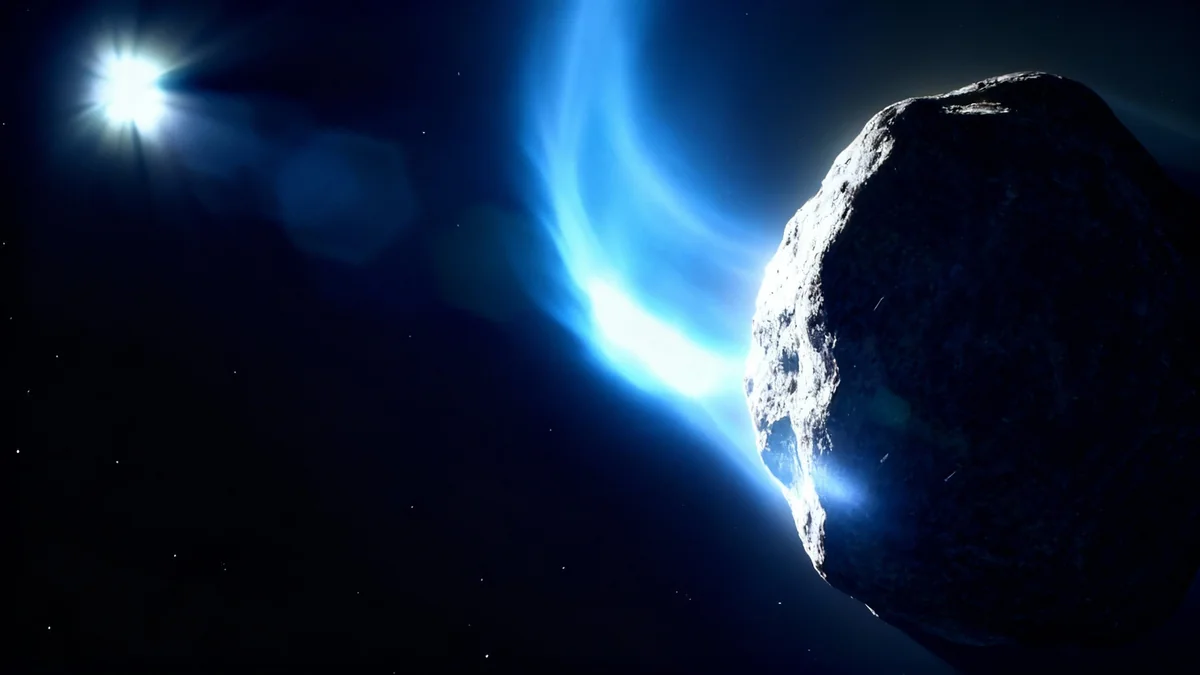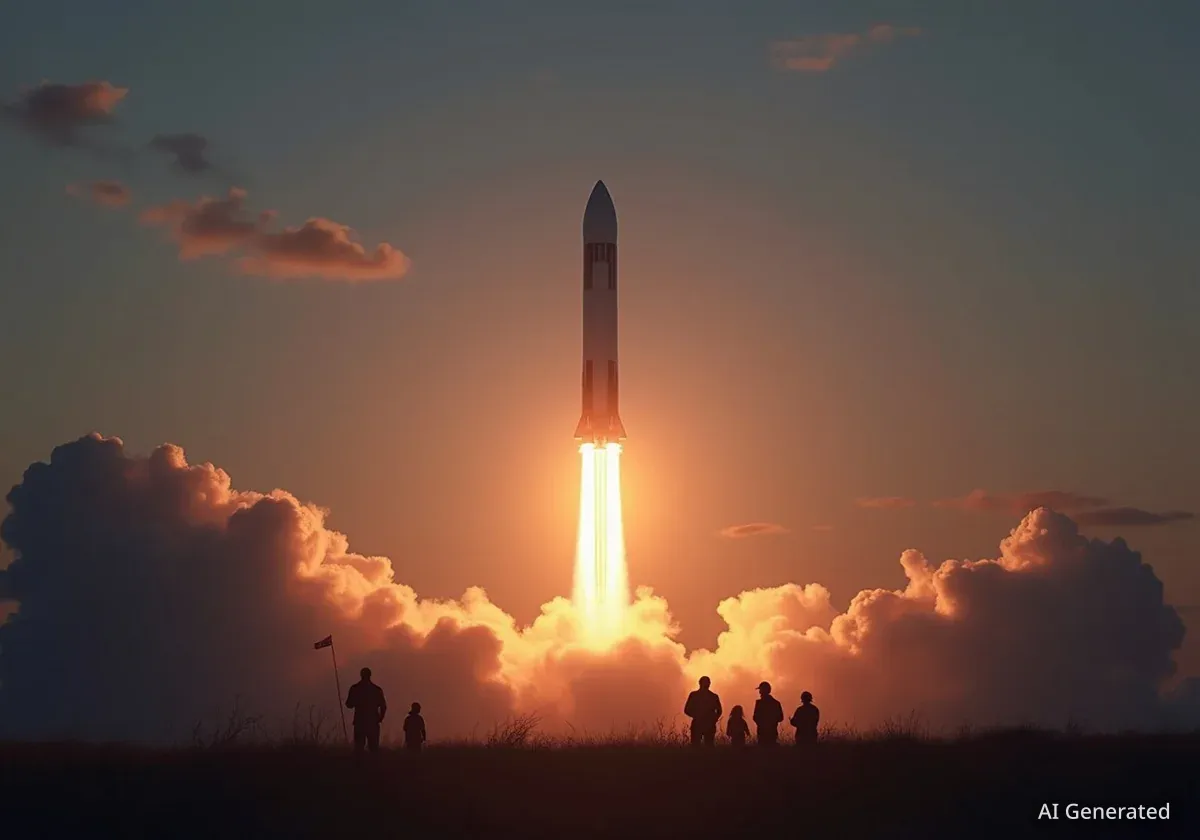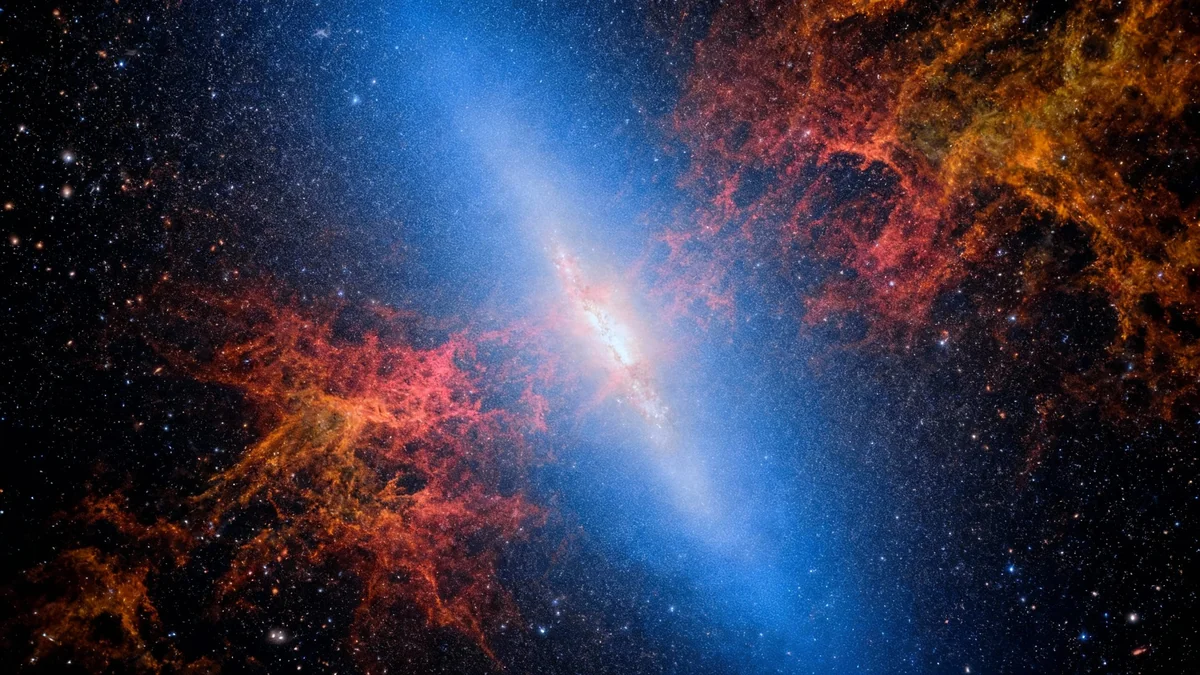A recent photograph captured by an astronaut aboard the International Space Station reveals a startling geological formation in the heart of the Sahara Desert. The image, taken on February 12, 2023, shows a massive volcanic caldera in Chad that bears a striking resemblance to a human skull staring up into space.
This natural illusion, located in the Tibesti Massif mountain range, is created by a unique combination of mineral deposits, volcanic cones, and shadows. While it appears as a single, cohesive face from orbit, the features are entirely different when viewed from the ground, highlighting the unique perspective offered by space-based observation.
Key Takeaways
- An astronaut photograph from 2023 shows a volcanic crater in Chad that looks like a skull.
- The formation, named Trou au Natron, is approximately 1,000 meters (3,300 feet) wide.
- The white 'face' is a deposit of natron salt, while the 'eyes' and 'nose' are volcanic cinder cones.
- This now-barren area was once a deep glacial lake, with fossils dating back 120,000 years found at the site.
An Unsettling View from Orbit
From 250 miles above the Earth, the landscape can present stunning and often surprising patterns. The image of the Trou au Natron caldera is a prime example. Captured by a crew member on the ISS, the photograph showcases what appears to be a ghostly face etched into the desert floor. The distinct features of eyes, a nose, and a mouth are clearly visible, formed by the natural geology of the remote region.
The caldera is situated in the Tibesti Massif, a volcanic mountain range that spans approximately 300 miles across Chad and Libya. This massive crater was formed by a powerful volcanic eruption hundreds of thousands of years ago. Today, its floor creates an illusion that has captured the attention of scientists and the public alike.
The Science Behind the Skull
The illusion is not a random coincidence but the result of specific geological components interacting with light and shadow. The perception of a skull is a classic example of pareidolia, the human tendency to see familiar patterns, like faces, in random objects.
Anatomy of a Geological Illusion
- The Face: The pale, cracked surface that forms the skull's main structure is a vast deposit of natron, a naturally occurring salt mixture. It consists of sodium carbonate, sodium bicarbonate, sodium chloride, and sodium sulfate.
- The Eyes and Nose: The dark, circular voids that create the 'eyes' and 'nasal cavity' are actually cinder cones—steep hills formed around volcanic vents that rise from the caldera floor.
- The Shape and Shadow: The overall three-dimensional shape of the skull is accentuated by the shadow cast by the caldera's towering rim, which can be seen on the left side of the formation.
From the rim of the crater or on its floor, the illusion completely vanishes. The cinder cones appear as large, individual hills, and the natron field looks like a vast, cracked salt flat. The skull shape is only perceptible from a great distance above, making it a spectacle reserved for astronauts and satellites.
A History Hidden Beneath the Salt
While Trou au Natron is a dry and seemingly lifeless place today, its past tells a very different story. Researchers have uncovered evidence that this volcanic pit was once filled with water, forming a deep glacial lake. This ancient body of water supported a vibrant ecosystem in what is now one of the world's most arid regions.
From Lake to Desert
Scientific expeditions have revealed a rich biological history at Trou au Natron. In the 1960s, researchers discovered fossils of small aquatic organisms, including sea snails and plankton, beneath the natron crust. These fossils were dated to approximately 14,000 years ago. A more recent expedition in 2015 unearthed algal fossils that are estimated to be as old as 120,000 years, painting a picture of a lush, wet environment during a different climatic period.
The transformation from a thriving lake to a barren salt pan underscores the dramatic climate shifts that have occurred in the Sahara over millennia. The natron deposits themselves are remnants of this watery past, formed as the lake evaporated and left behind concentrated mineral salts.
Volcanic Neighbors and Other Earthly Illusions
The Trou au Natron caldera has been volcanically dormant since shortly after its formation. However, it is located near another significant volcanic feature, Tarso Toussidé. This neighboring volcano is considered to be active, although its last confirmed eruption occurred more than 12,000 years ago. The entire Tibesti Massif remains a geologically significant area, representing one of the most prominent volcanic regions in the Sahara.
This is not the only place on Earth where volcanic activity has created a skull-like appearance from above. A similar formation can be seen on the Chiltepe Peninsula in Nicaragua's Lake Managua. There, a pair of volcanic lakes within separate calderas combine to create a remarkably similar facial illusion when viewed from space.
These natural formations serve as a powerful reminder of our planet's dynamic geology. They demonstrate how perspective can transform a landscape, turning ordinary geological features into extraordinary and recognizable shapes that connect with our human imagination.





